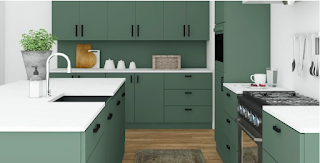Importance of Mood Boards In Interior Design
Mood Boards in Interior Design
Finding a concept is much simpler than putting it into words. All creative people concur that a lot is lost between conceptualising an idea and putting it into practise. The forces of creativity are like gold dust. The outline of the expression must be recorded whenever a designer's mind is processing inspiration from the outside world so that it can serve as the guide for carrying out the current assignment. Mood boards are necessary because the originality of an idea carries over from the conceptual stage to the execution stage.
What Are Mood Boards?
Mood boards are collages, either digital or physical, that show objects, patterns, fonts, colour schemes, and other design components that allude to the final form or result of an idea. A designer's creative vision comes together in mood boards. To guarantee that the designer and the clients have the same perspective, the design language is broken down into a number of components that are then discussed individually with a remark.
Why are Mood Boards Important for Interior Designers?
Mood boards are versatile visual organisers that are employed for a variety of purposes. A strong mood board can help the design process by ensuring that the final appearance and feel are in line with the client's needs and vision.
If a designer wants to narrow down on a specific aesthetic for the client's project before getting started, mood boards are a useful tool to have at their disposal. Mood boards may convey a lot about the look and feel of the final design with a lot less time and money than mockups and prototypes.
A mood board is a fantastic visual tool for showing clients design suggestions. For instance, when an interior designer employs terminology like "bohemian," "rustic," or "traditional," many clients have no understanding what they imply. Clients, however, may express their opinions about the ideas right away if the designer presents them with a mood board that has such components.
Importance of Mood Boards in Interior Design Process:
a) Ensuring that the client approves of the designer's thought-process
It is preferable to provide a basic mood board illustrating the first idea and ask for their opinion rather than spending hours creating a single look just to have the client reject it and force designers to start over from scratch.For designers, the desire of perfection is a common problem. The pursuit of perfection is time-consuming when the designer's objective is to produce as many ideas as possible.
Designers can quickly jot down ideas on mood boards without worrying about how they will be put into practise. The designer's initial suggestion isn't the final result; rather, it serves as a starting point for talking about the idea, which is the most important component. boards.
Click here to know more.





Comments
Post a Comment